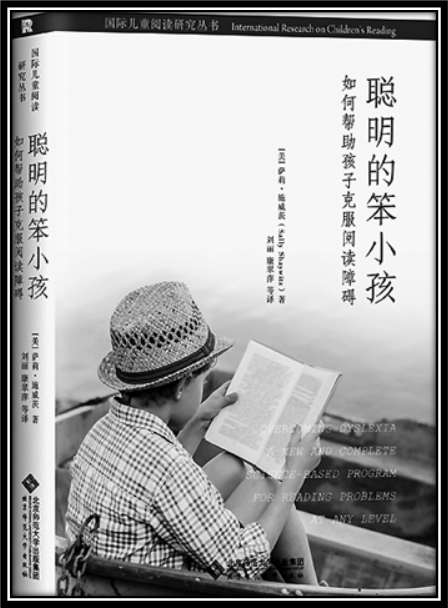In modern society, reading is one of the essential skills for individuals. Reading is a key way for children to learn knowledge, as well as an important way for children to develop their thinking and cultivate their temperament.
In the framework map of 21st century student learning proposed by UNESCO, reading and communication occupy a central position in the seven major learning areas. Therefore, parents are looking forward to their children learning to read as soon as possible. It can be seen that learning Chinese for children with reading disabilities.
However, in reality, many children around the world are unable to read normally. Some parents feel that their children are unable to concentrate and feel that they are ‘ADHD’, without realizing that their learning disabilities may be another situation.
Under normal educational conditions, most children can learn to read normally. However, although reading is so important for children’s development, some children are unable to successfully acquire reading.

According to research data statistics, there are approximately 5-10% of children in English, Chinese, Japanese, and other writing systems who have normal intelligence and equal access to education. However, their reading performance still lags far behind that of their peers – this group of children is referred to as dyslexia.
Firstly, children with reading disabilities do not have intellectual problems, and some children with reading disabilities are even very intelligent.
If the problem of reading disabilities can be detected in a timely manner and receive special education, they may overcome reading and writing problems, fully tap their potential, and even become creative talents in various fields. Therefore, sometimes we refer to children with reading disabilities as “smart and stupid children”.
Secondly, dyslexia is a developmental disorder that afflicts individuals diagnosed with dyslexia throughout their lives. Throughout primary and secondary schools and into adulthood, they face difficulties in word recognition, understanding, and dictation. So don’t expect reading disorders to naturally heal. Early detection and intervention are crucial for overcoming reading disorders.
Once again, reading disorders and attention deficit hyperactivity disorder (ADHD) are two different problems, and these two abnormalities can exist separately or simultaneously. Although the prevalence of reading disorders caused by ADHD is as high as 20% -40%, reading disorders and reading difficulties caused by ADHD are two different abnormal phenomena. It is important to distinguish between these two issues because the intervention methods are also different.
Finally, dyslexia has familial inheritance. Research has shown that in identical twins, if one person suffers from dyslexia, the probability of the other person suffering from dyslexia is as high as 68%.

If one of the parents or direct siblings suffers from dyslexia, the probability of the individual suffering from dyslexia is about 50%. This can serve as one of the signals for early recognition of children with reading disabilities.
For children with a Chinese background learning to read, the first threshold is the decoding of Chinese characters, which is to establish the connection between the shape, pronunciation, and meaning of Chinese characters.
On the road to becoming a fluent reader, the first stumbling block that Chinese dyslexic children encounter is memorizing the shape of Chinese characters and writing them.
A large number of studies have consistently shown that children with Chinese reading disabilities have difficulties in processing Chinese characters. They often have slow and limited literacy, often make mistakes in writing, and have difficulty remembering Chinese character shapes.
Therefore, in order to firmly grasp the writing method of Chinese characters, Chinese children often spend a lot of time copying Chinese characters.
A stroke by stroke transcription can help children finely visually process the shape of each Chinese character, like building LEGO blocks, combining different strokes according to a certain spatial structure, and neatly and harmoniously “building” them in the meter character grid.
This is not an inefficient and clumsy method. On the contrary, copying is an effective means for both literacy and writing. It can not only help children establish a solid representation of character shapes in their brains, but also help them write Chinese characters more accurately.
The structure of Chinese characters is complex. According to spatial relationships, Chinese characters can be further divided into individual characters, upper and lower structures, left and right structures, and bounding structures.
Due to the visual complexity of Chinese character composition and the spatial diversity of Chinese character structure, mastering orthographic skills is relatively difficult for Chinese children. Research has also shown that orthographic defects are the core defects of Chinese reading disorders.
The study of reading disorders has a history of over a hundred years in the West, and has been relatively comprehensive in terms of assessment, intervention, and policy support for reading disorders.
Singapore, China, has also taken a step forward in this regard. Currently, it has developed a reading disability behavior scale and diagnostic tests, designed Chinese reading and writing courses for kindergartens and primary and secondary schools, and developed corresponding textbooks.
Relevant training has been provided to education administrators and Chinese teachers in primary and secondary schools throughout Hong Kong.
In addition, they also adopted a three-level response intervention model to replace traditional methods for intervention in children with reading disabilities, achieving good intervention results. The importance of learning Chinese for children with reading disabilities is gradually becoming more prominent.
Due to the late start of research on reading disorders in mainland China and the main focus being on basic research, the applied research on the diagnosis and intervention of reading disorders is still relatively weak. The public’s understanding of reading disabilities is even more limited.
In recent years, more and more scholars have begun to pay attention to the popularization of common knowledge about reading disorders, which has led to a more scientific understanding of reading disorders among the public. However, there is still a long way to go in the development of intervention and diagnostic tools for reading disorders.
As mentioned earlier, dyslexia is a special learning disorder originating from abnormal brain and neural development, and children with dyslexia are not necessarily not smart enough or do not study hard enough.
On the contrary, their intelligence is normal or even extraordinary, and they even have special talents in many aspects. In the absence of timely diagnosis and intervention, what they most need is understanding and support from teachers and parents.
The importance of learning Chinese for children with reading disabilities is reflected in various aspects. It is hoped that these “smart and foolish children” can also have a happy childhood and enjoy the pleasure of reading like other children.
